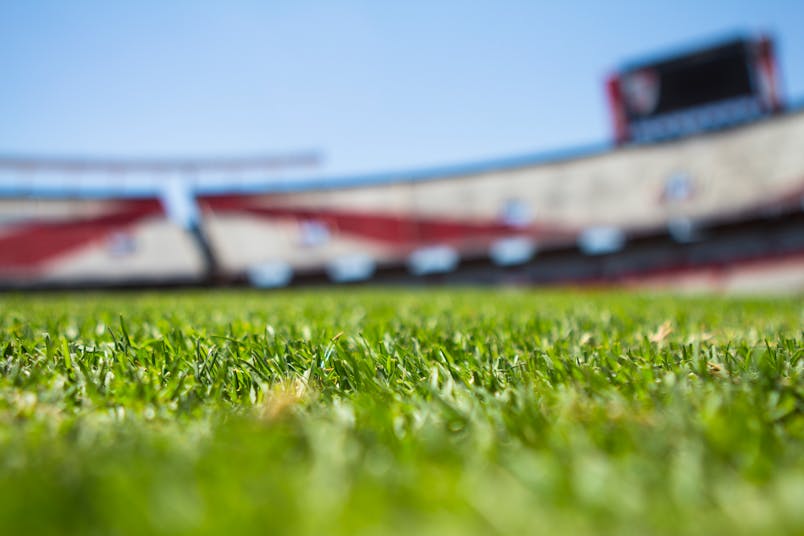Artificial grass is becoming more and more commonplace in residential gardens, and it’s about time: there are clear advantages to a lawn that looks beautiful year-round and doesn’t need mowing weeding, or fertilizing.
The artificial lawns of today are durable and very realistic—it’s difficult to tell they’re synthetic without getting up close. Their big advantage is their durability and ability to withstand a lot of wear, although that doesn’t mean they’ll last forever.
This article examines the lifespan of artificial grass, including factors that affect its durability, and how to keep it in the best shape for as long as possible.
Artificial Turf Lifespan
The average lifespan of artificial turf is 10-20 years. At the very least, a synthetic lawn should last at least 8 years.
Why is there such a difference in this estimated lifespan? Because there are a handful of factors that affect how long an artificial lawn lasts.
Factors Affecting the Lifespan of Artificial Grass
The main factors that determine how long your artificial lawn will last are:
Material Quality
The better quality and more durable the materials used to make the lawn, the longer it’s likely to last. The old saying, “Buy cheap, buy twice” definitely applies here. It’s worth spending more upfront on a top-quality product that will withstand all weather conditions.
The Installation Process
Getting your synthetic lawn installed by a professional gives it a better chance of lasting a long time compared to if you take the DIY approach. While you might be tempted to save some money and follow an installation guide online, you may struggle to install the lawn properly, ending up with misalignment and drainage issues that could cause your lawn to become worn and require replacing sooner.
Maintenance Schedule
It’s true that artificial lawns require less upkeep than real lawns, but that doesn’t mean they’re maintenance-free. You’ll still need to rake them occasionally, to “fluff up” the grass, and use a stiff-bristled brush to remove the dirt and natural debris from the surface. The quality and frequency of maintenance your lawn receives will play a role in determining its lifespan. The occasional professional deep clean—explore our solutions for more information—can restore your lawn to like-new condition and help extend its lifespan.
Wear and Tear
Spills, pet accidents, and even rips caused by furniture or high footfall can affect the appearance of your artificial turf. The more wear and tear your turf receives, the faster it’ll degrade. So if you want your lawn to last as long as possible, try not to overuse it.
Why Does Fake Grass Last So Long?
Fake grass lasts a long time because of its construction and materials. Most artificial lawns are made from nylon, polypropylene, and polyethylene, treated with additives to resist UV light, and infill materials are used to prevent heat damage and waterlogging.
The materials used in artificial turf are durable and degrade very slowly. They’re also resistant to staining and fading, and hold up well under fluctuating weather conditions.
Takeaway
Artificial grass lasts beyond 20 years with the right care, but there are a few factors that will determine the lifespan of your own lawn.
Make sure to understand the pros and cons of artificial grass before you invest in it, and maintain your lawn according to the installer’s instructions to extend its lifespan as long as possible.































